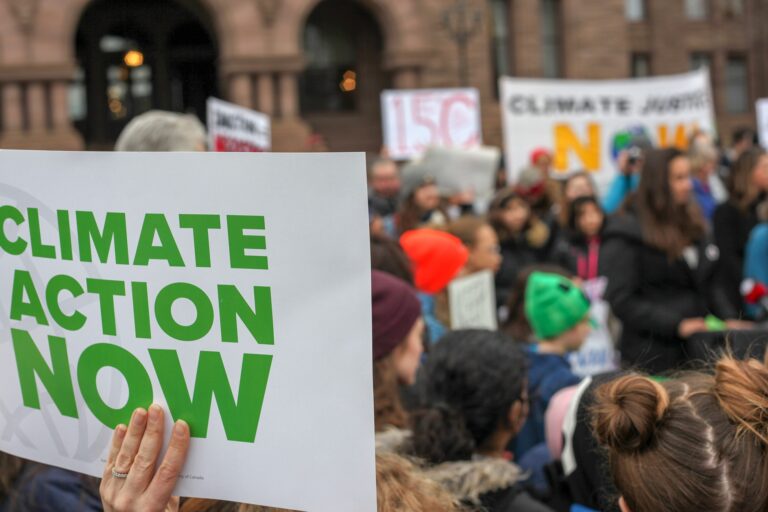In mid-April, I took a train to Sacramento for the first time to lobby in support of three climate justice bills and against climate budget cuts.
Together with The Climate Center, as well as partners from other organizations, we urged legislators and their staff to vote YES on these three bills:
- SB 253, which would require corporations making over $1 billion in revenue that do business in California to report emissions from their entire supply chain
- SB 12, which would lower the emissions goals in California from 40% below 1990 levels to 55% below 1990 levels by 2030
- SB 233, which would require new electric vehicles to be able to send electricity back into the grid, lowering energy bills and increasing the reliability of the electricity grid
We also asked them to fight against budget cuts that are currently being proposed. These cuts would slash key investments in climate change prevention and resilience that are needed to protect frontline communities. Learn more about the bills >>
I learned a lot from the experience and would love for you to see what it’s like:
More about the bills:
SB 253
- Transparency is essential for informed markets but greenhouse gas (GHG) emissions disclosure is currently optional for companies. GHG emissions data is fundamental for understanding a company’s financial position in the face of the net-zero transition.
- Most Americans favor requiring companies to disclose their environmental impact.
- Emissions reporting has widespread support from businesses. In 2021, nearly 800 companies worldwide called on G20 nation leaders to mandate corporate climate disclosure. And in 2022, more than 500 investors representing $39 trillion in assets under management called on governments across the world to strengthen climate disclosure standards, including through mandatory reporting.
- Help us advocate for this bill >>
SB 12
- Energy Innovation’s Energy Policy Simulator model found that lowering emissions goals in California to 55% below 1990 levels by 2030 will create more than 235,000 additional jobs and increase California’s Gross Domestic Product by $55.4 billion.
- The 55% target is achievable. The EU set their goal at 57% and is considering 62% by 2030, and the UK has a goal of 68% cuts by 2030. The Climate Center used Energy Innovation’s model and found that California could even achieve a 65% reduction by 2030 with many benefits to our state.
- We also advocated for adding guardrail language to the bill that would ensure that accelerated climate solutions do not increase the pollution burden frontline communities already face.
SB 233
- Bidirectional electric vehicles (EVs), or vehicles that are capable of sending electricity back into the grid, can strengthen the reliability of California’s grid, which is under stress. For instance, on September 6, 2022, California’s grid hit a record high of 52 gigawatts. In addition to utility batteries to support the grid, California can use the energy storage capacity of electric vehicles to support the grid. By 2030, with almost 8 million EVs on the road, we will have more than 60 gigawatts of capacity available in vehicles, the capacity of which could be used as a grid asset.
Share this blog!
Now you can find out with our 2023 California Environmental Scorecard! Use it to see how California’s leadership scored, how many legislators take dirty oil money, and much more.
Share this blog!



